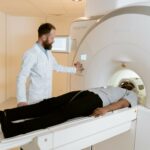X-Ray
May 4, 2022WHAT ARE X-RAY STUDIES?
The x-ray has been called one of the most significant advances in all of medical history. It is used in many different ways in medical diagnosis. An x-ray image is produced when a small amount of radiation passes through the body and strikes a sheet of sensitive film placed on the opposite side of the body. The ability of x-rays to penetrate tissues and bones varies according to the tissue’s composition and mass.
ARE X-RAYS SAFE?
There is general agreement within the medical community that the small theoretical risks associated with the use of radiation are greatly outweighed by the information x-rays provide relating to a patient’s condition.
Improved film quality and advances in electronic technology have helped create better images faster while using lower doses of radiation.
WHAT ARE “CONTRAST” STUDIES?
The body’s soft tissue organs, such as the stomach, liver, and intestines have a density which allows an external outline to be seen but does not show the inner parts of these structures. This problem can be solved in “hollow” organs such as the stomach and intestines by introducing a contrast material such as barium which can be swallowed or given as an enema. Air and barium can be used together as a “double contrast” study for greater detail. These studies are also called fluoroscopic studies. Some iodine solutions block x-rays in blood vessels or kidneys enabling those structures to be seen on film or video for later review.



